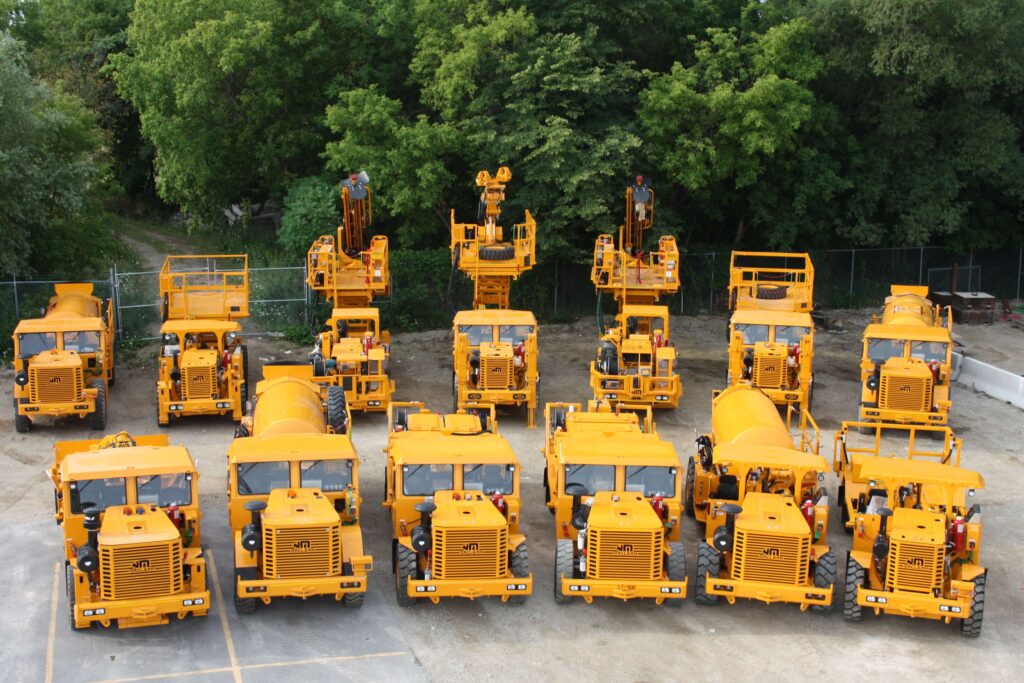A decade ago, one of our former colleagues, since retired but always in our hearts (thank you, Roger), had the great idea to get up on a zoom boom lift in the parking lot of the MacLean manufacturing facility in Collingwood, Ontario, to capture a moment in time – a substantial portion of the MacLean production support mining equipment product line assembled and in one place, about to be shipped.

Bolters, elevated work platforms, material transport trucks, even a ramp dust-mitigating water sprayer thrown in the mix for good measure. All that’s missing is a representative from the MacLean Ore Flow Suite – a secondary reduction unit like a water cannon, blockholer, or mobile rockbreaker.
The typical shipping schedule for the units coming out of our manufacturing facilities is so tight that we usually don’t get the chance to stage photo ops. But it’s good that we did that day, especially in the context of this anniversary year where we’re recognizing five decades of continuity and growth. We’re doing a lot of looking back to underline the past’s connection to the future – acknowledging that the first 50 sets up the next 50.
MacLean product development over the years has built up a product line of close to 60 diesel and BEV models and even though the new products we are designing look increasingly different from what we produced across our first 50, what hasn’t changed is our focus on niche, customized solutions for vehicle categories within the Production support part of the mining cycle.
The only difference with ongoing expansion of the product line in recent years (dedicated scaler, mobile batch plant, elevated work platforms, underground grader, robotic bolting) is the wider context of the changing industry these mining vehicles are designed to work in. This new context, the backdrop to our ‘next 50’, is the imperative to limit to a greater and greater degree, operator interaction with the environment. Not just ‘no boots on the ground’ mining. Eventually, no boots underground at all.
This means finding ways to automate and digitalize the underground fleet so that the mining cycle can be pursued via remote control, with a high degree of interoperability across multi-OEM fleets, with real-time data, and an increasing amount of autonomous function. The future is here and as the old saying goes…things happens slowly then fast.

